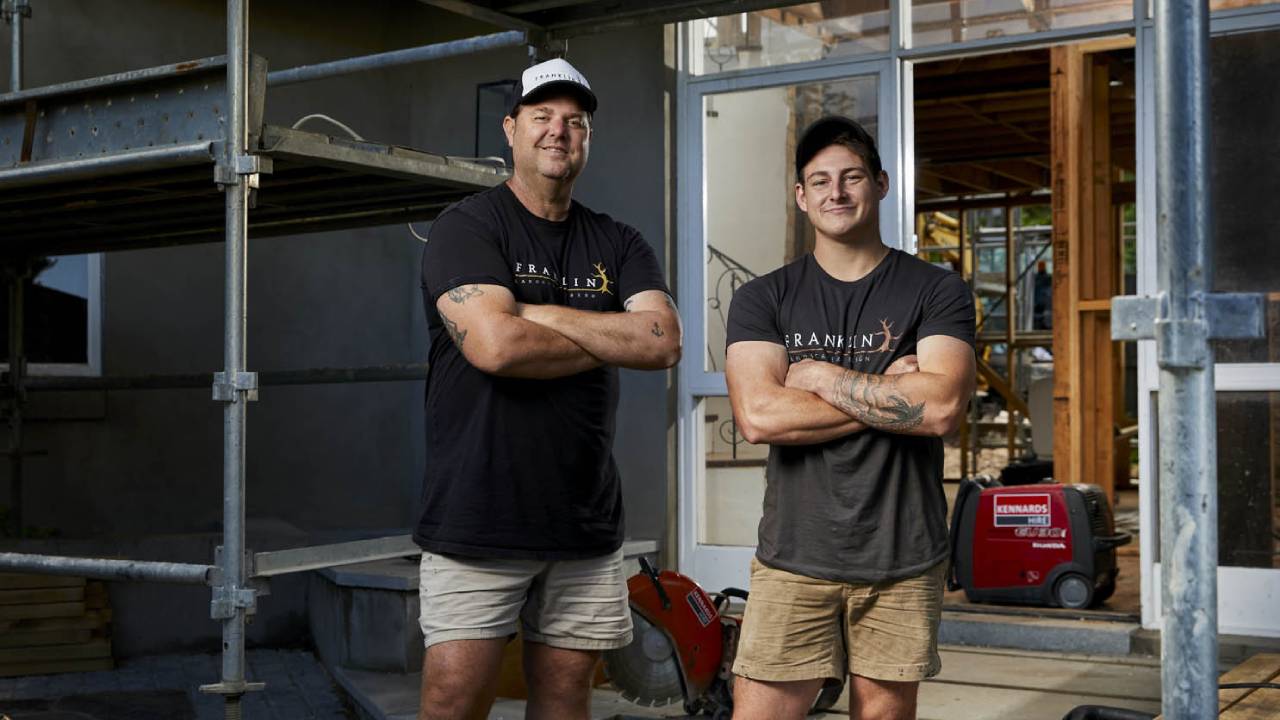Top DIY turf tips from The Block’s Dave Franklin

Since we find ourselves stuck on home turf more than we’d like to be, it’s time to put a silver lining around the cloud and get stuck into some DIY.
One DIY task designed to get you outdoors is laying new turf - and The Block landscaper Dave Franklin has expert advice on how do it. Best of all, Kennards Hire’s contactless delivery and equipment hygiene measures mean you can still hire the equipment you need to lay turf like a professional.
Preparing the soil
With production of The Block on hold due to COVID-19, Dave says now’s the time for viewers to use the DIY skills they’ve learned from watching the show. And he believes turf laying is the perfect entry-level landscaping job.
“We have apprentices in my landscaping business and if they can’t pick up laying turf in a day, then they probably aren’t going to make it as landscapers,” he says.
When it comes to choosing the type of grass to use, Dave says it’s best to consult your local turf supplier. Because what works in Cairns is not going to work in Perth.
“We have different turfs for different states, so the first thing to do is ring up your local turf supplier and listen to their advice,” he says.
To make sure your turf starts out healthy, it needs clear, healthy soil. If grass is already growing, use a glyphosate product such as Round Up or Zero that kills it and makes it easier to remove. This also stops rogue grass and weeds from infiltrating the new lawn.
Remove the weeds
“You’ve got to get rid of those weeds,” Dave says. “You don’t want them returning once you’ve laid the turf.”
Next, use your lawn mower at its lowest setting to scalp the lawn to its lowest point. Once this is done, the next task is to turn the soil. For this, it’s best to use the proper equipment.
For soft, sandy soils, use a rotary tiller to turn the soil and aerate it. If the soil is a compacted clay, use a rotary hoe. A tough, walk-behind, petrol-powered hoe breaks up the most difficult clay or sod.
Level out dips and bumps
Once you’ve turned the soil over, use a manual rake to removes stones and debris. If you have major dips in the surface, fill these in with a skid steer or mini loader.
If they are minor ones, you can use a shovel to fill them in – but you must fill them.
“If you’re preparing the surface and you’ve got holes and dints in there you are going to end up with an uneven lawn,” Dave says.
“So you have to make sure that your surface preparation is the best you can make it. When you buy the turf you usually get a lawn starter, which you should add to the soil.”
At this point you might decide to use turf underlay. This is soil that contains a large proportion of sand as well as organic matter, and helps the turf take to its new home. Add 50–150mm, using the higher amount if you have a very compacted clay soil.
Next, use the easy level rake to get the surface even, and flatten everything with a roller. You are now ready to lay the turf.
At this point, you can add fertilisers and conditioners to the surface as recommended by your turf provider. This helps your turf take root in the early stages.
Join the turf edges carefully
If you have a sloping lawn, start at the bottom. Lay a perimeter of turf then fill in the centre, taking care not to leave any gaps. Use an overlapping pattern like brickwork, so that the joints are staggered. When you trim the turf rolls, keep the offcuts for filling in awkward spots later on.
Dave says using sand to sew together the pieces of turf and making sure that each piece butts up against the next firmly is important to stitch the pieces together into a seamless lawn. Finally, water the turf and roller it to make sure the turf’s roots are pressed firmly into the soil.
Rolling out the turf
One big tip for beginners is to use a roller.
“I see all too many times people rolling out the turf and just kicking it in,” Dave says.
“If you don’t roll the turf down there will be pockets and holes underneath where the roots aren’t in contact with the soil. That’s going to lead to problems.”
Dave hopes to be back working on The Block soon, but in the meantime, he says DIY turf laying is not a bad way to spend the time for those of us at home.
“It’s the perfect introduction to landscaping,” he says. “Anyone can give it a go.”
Call your local Kennard Hire branch for advice on equipment hire to get your home turf looking better than ever.
This story was written by Dave Franklin.
